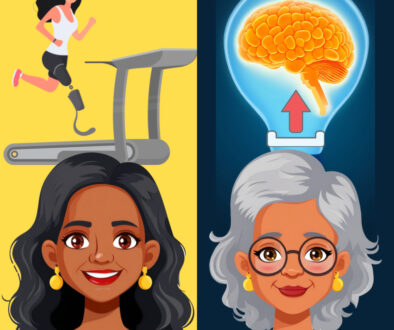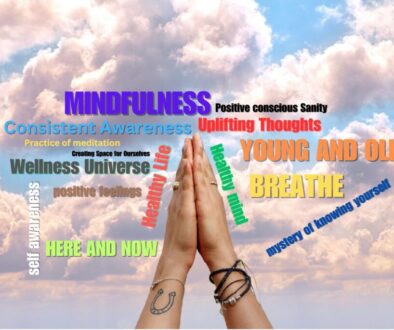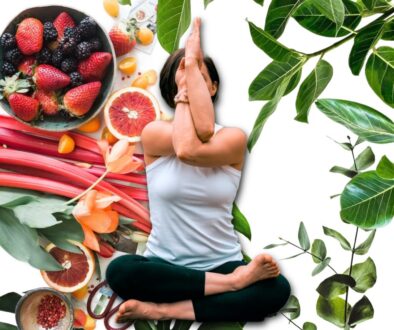The Power Of Natural Immunity
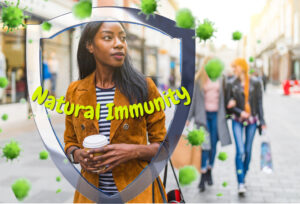
Two years into the pandemic, vaccines have been deployed to different countries and increasing resistance to COVID-19 is taking a fairly stronghold among citizens of this planet. As a result, economies are slowly opening up, with certain levels of caution, confident that the spread of the disease has somehow been controlled. Everyone realizes that they still could not let their guards down because COVID-19 can still mutate and a new variant can wreak havoc to the gains already achieved.
This content is locked.
Only members can access this page, please register or login.
Virus, germs, bacteria and all other forms of pathogens will continue to be present in the environment. Some would be harmless and won’t even leave a trace when it infects humans. Others will linger and new variants will simply await fertile grounds for a welcoming host. It is almost impossible to develop vaccines for every conceivable strain of current and previous forms of infections. So where can mankind turn to? Like epidemics and pandemics of past generations man can only turn to harnessing his own immune system to prepare for unclassified pathogen attacks.
The Immune System
All animal species, humans being the highest form in the mammalian specie, as well as all forms of organisms are interconnected in a complex web of relationships sharing the benefits accorded by the environment. Organ functions of different species devote much of its bodily resources to identifying and neutralizing threats from disorders and malfunctions of organisms not belonging to their kind [1]. The management of various threats brought about by pathogens from other species is made possible through maximizing the potential of man’s sophisticated immune system.
A major part of the immune system, particularly white blood cells, are in turn comprised of two major types of lymphocytes, which are essentially the body’s reliable warriors against infection. These are B-lymphocytes and T-lymphocytes. The former are types of cells that produce antibodies that attacks particular antigens. T-lymphocytes, on the other hand, attack the antigens directly, releasing chemicals called cytokines that control the entire immune system. As these lymphocytes develop, they can tell the difference between the body’s normal tissues and those alien to it. They are then able to attack the latter. In their formation, a few of these B- and T-lymphocytes will multiply to provide memory for the immune system. [2]
Immunity cells are believed able to read the environment through receptors and modify this accordingly, utilizing human genes encoded in their DNAs. It is likewise believed that some genetic groups in one’s DNA chain are switched on, others turned off, giving the different cell types flexibility to handle an infection. The immune system classifies the environment in terms of proteins it contains. It executes a very active form of monitoring linked to a stringent verification process. It can distinguish differences between and among cellular activities of one’s self versus non-self as well as harmless non-self from threatening non-self. A process of recognition at near molecular level allows the immune system to appropriately utilize proteins encoded in the human genetic make-up, enabling it to adopt flexibly to its environment [1].
The body is a remarkable mechanism with a constant capability for cell renewal, giving its various organs capability for longevity. Constant cell renewal is what gives the immune system the power to protect the host from environmental threats of infection. Historically infections tend to reproduce more rapidly than their hosts and can change their so-called appearance to evade recognition by the immune system. Every pathogen chooses the right form of receptor to open a door to the cell. The immune system blocks off the entry by producing antibodies that neutralizes the infection. Once it succeeds in penetrating the cell a significant feature of the immune system is its ability to retain a memory of the infection and protect the body from reinfection and its spread. [1] Such is the case when the body gets infected with mumps, measles and small/chicken pox. Even without a vaccine, re-exposure to these types of diseases provides the body with protection from what is termed natural immunity.
Natural Immunity
Natural immunity occurs when the body gets infected with a disease and it develops antibodies to fight the infection. In this situation, as opposed to vaccine-infused immunity, the host normally gets sick but survives the infection. Others may be fortunate to merely be asymptomatic. With natural immunity, the chance of reinfection diminishes but its efficacy may only last for a limited period of time. For other diseases (like mumps and measles) it can protect the host for a lifetime, thereby possibly eliminating the need for vaccination. However, going by this route in protecting one’s self is risky, considering the disease’s likely damage to the proper functioning of organs, or even death. This is true for COVID-19 which has proven highly transmissible and spreads rather easily inside the body, particularly the respiratory system.
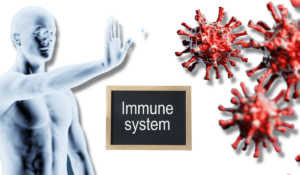
The United State’s CDC is recently reported to finally recognize the importance of natural immunity as more studies reveal higher levels of protection through infection-induced immunity compared to the vaccine-induced type. It seems that the more severe the effect of the disease on the host, the stronger and longer is its efficacy in protecting the individual from re-infection. Yet this further supports the need for vaccines to enhances protection. It is believed that the current vaccines do not provide lasting protection, with boosters having to be given five to six months after the second dose. But these vaccines have still managed to provide protection even for the latest omicron variant.[4]
Research has also revealed that omicron will give much of the world’s population what some scientists call “superimmunity” – providing stronger protection against other new variants of COVID. Superimmunity will not necessarily stop people from contracting the virus as well as transmitting it but apparently those who get infected experience only mild infection or turn out asymptomatic.[3]
As far as contracting an infection is concerned, B-lymphocytes start producing and mobilizing antibodies within the first few days of contracting COVID, steadily increasing in concentration for weeks and months after. Generally, after 90 days, the body develops a robust antibody response to the various COVID variants. This has allowed the US CDC to exempt people with infected-induced acquired immunity from undergoing quarantine. With COVID, those with natural immunity to the virus still have the antibodies a year after infection while the existence of killer T-cells was found present in some for two years following the infection. [4]
Boosting the Body’s Innate Immunity
In this fast-paced world, protecting and enhancing the body’s innate immunity (or immunity acquired at birth) is not given enough attention especially if one is young and active. It is never too soon to think of one’s need to boost his/her natural defenses against disease. The body needs every kind of support to delay the ill-effects of wear and tear, stress, too much alcohol and other abuse the body can be subjected to. Dietary and lifestyle changes may be needed, especially in the aftermath of COVID surge, to prepare the immune system to battle new forms of virus or pathogens and achieve the desired outcome of natural immunity when these viruses attack the body’s innate defenses. Some of these changes are essentially no-brainers to improving one’s health status.
Enough sleep, which is apparently a luxury to some these days, is a very basic need of the body for cell-regeneration. How often does one pack up his/her schedule with all forms of activities and stay up late nights many days in a row to attend to unfinished business. Sleep is one of the best ways to strengthen the immune system. When having a cold, the best prescription other than fluids is sleep.
Eating healthily does not need much discussion. Nature’s way of assisting in the cell rejuvenation process, other than sleep, is the right and balanced kind of nourishment. Too much of one kind of vitamins and minerals can be harmful to one’s health. Fiber assists in elimination of toxins which the body acquires from consuming fruits and vegetables. Choose healthy fats over saturated ones for heart health. Limit salt and sugar to minimize inflammation in any of the organs and avoid the occurrence of diabetes and hypertension, cancer and other debilitating diseases. Herbs can serve as substitutes for more flavorful meals.
One can never overemphasize the need for exercise, even at moderate levels than no exercise at all. A sedentary lifestyle is a sure avenue for quick deterioration in health and wellbeing. The nerves, brain functions and digestive systems are assisted much more effectively when the body constantly moves. And it goes without saying that the rest of the body benefits with exercise since efficient blood flow throughout the body gives every organ its chance at cell rejuvenation.
Man cannot completely avoid stress but must be able to live with it, without compromising health and wellbeing. The right kind of attitude and positive disposition in handling daily stresses, frustrations, emotional setbacks contribute to uplifting one’s mental health and acceptance of life’s many challenges.
Much of the power of natural immunity is acquired through these daily practices and it brings about confidence and peace of mind knowing one’s body is equipped with what it takes to fight viruses, germs, bacteria, pathogens and all other unknowns in his/her immediate environment. The immune system simply deserves enough tender loving care if it is to be in tip-top shape to fight new variants of existing diseases or even unclassified new diseases.
References:
[1] The Immune System by Lindsay B. Nicholson, Review Article, October 26, 2016, Essays in Biochemistry,
Portland Press, Essays Biochem (2016) 60 (3): 275-301
[ https://doi.org/10.1042/EBC20160017 }
[2] Your Immune System (for Teens), reviewed by Larissa Hirsch, MD, October 2019, Nemours KidsHealth
[ https://kidshealth.org/en/teens/immune.html ]
[3] Herd Immunity is Over – Long Live Superimmunity: The Omicron wave will leave most people with potent and durable protection against COVID by Allysia Finley, WSJ Opinion, January 17, 2022, 5:25 pm ET
[4] How long does protective immunity against COVID-19 last after infection or vaccination? Two Immunologists explain, The Conversation, February 25, 2022 1:45 pm GMT
Neriz Delfino,
Contributor
Professor (Ret.)
De La Salle University, Manila
